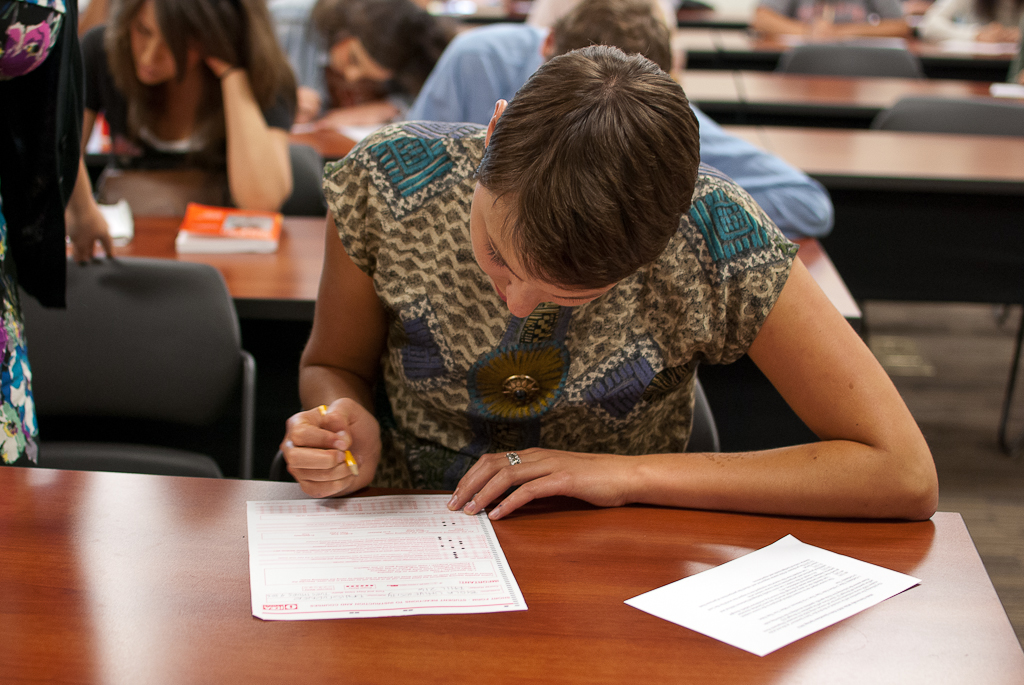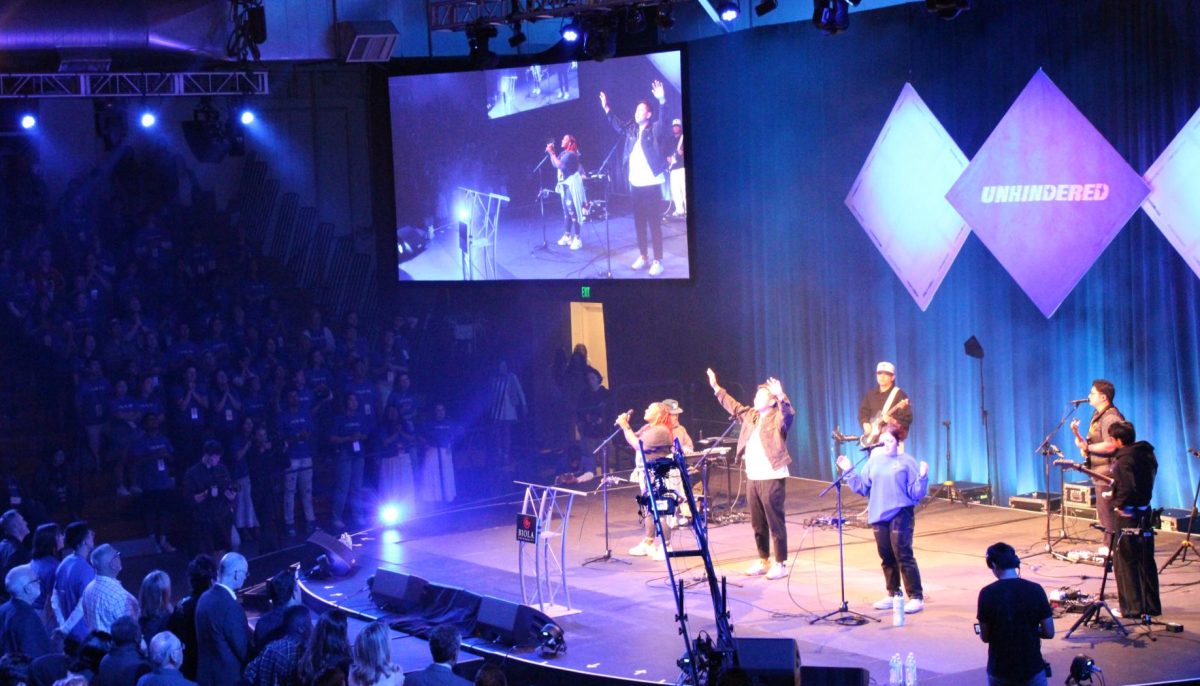
Junior Tabitha Coe fills out a course evaluation for Philosophy of Aesthetics. | Olivia Blinn/THE CHIMES
In the past five years, new focus groups and expanded surveys have given Biola students different ways to provide feedback to administration. Still, students may not understand how much leaders want to hear from them, or how easy it can be to get an audience.
Leaders in Student Development have traditionally gotten a sense of students through face-to-face interactions, according to Matthew Hooper, associate dean of students.
“The way to understand what students are thinking or where they are is by talking to them, hearing from them, listening, asking good questions,” Hooper said.
However, conducting focus groups is a recent trend, according to Hooper.
“In the last few years, we’ve been more intentional,” he said.
Focus groups attempt to connect with students
This is the third year Student Development has hosted focus groups. These groups are conducted three or four times per semester. Usually, between four and eight students get treated to lunch by Hooper and Danny Paschall, the dean of students. A wide variety of students are invited to participate, grouped by features including year in school, what they study, where they live, their ethnic background or what sport they play. One group of freshmen meets at the beginning and end of the year.
“[Focus groups offer] inputs that will inform our theory and our practice,” Hooper said.
John Tuttle, head of Biola's Student Communications office, conducts his own focus groups roughly twice a year.
“We have never had trouble getting students to sign up. Never,” Tuttle said.
Student Communications created in response to student feedback
Tuttle’s department was created recently in response to student needs. Tuttle proposed the creation of the Student Communications office in 2007. Many students were complaining that they didn't know what was going on at Biola — placards and banners were only getting so far, and campus event ads were stuck on paper in a digital world, according to Tuttle. Meanwhile, that year's Virginia Tech shooting led leaders to wonder if Biola had the means to effectively communicate in urgent situations.
Today, in contrast, students can keep up with announcements with new services like the digital signage throughout campus or @BiolaStudent, the Twitter account Student Communications uses to highlight upcoming events.
Most recently, Student Communications hosted three groups based on responses to the Student Satisfaction Inventory, a detailed survey offered to Biola students every year.
“Rather than putting a scantron in front of them, let's put a microphone in front of them,” Tuttle said of these groups.
Surveys like the Student Satisfaction Inventory offer students many chances to provide feedback that can get Biola leaders’ attention.
Efforts made to improve survey participation
Deborah Taylor, dean of university effectiveness, heads up the Center for Learning Enrichment, Assessment and Research. She oversees freshman and senior surveys, the Student Satisfaction Inventory and Individual Development and Educational Assessment end-of-course evaluations. Taylor has tried to improve survey participation since assuming leadership of C.L.E.A.R. in 2010.
For years, the freshman survey was conducted every other year, and the senior survey was discontinued for several years due to very low participation. When she came to C.L.E.A.R., Taylor secured the budgeting needed to start doing the freshman survey annually. She said she intends this year to resume the senior survey, with prizes as an incentive for participation.
Taylor started comparing freshman survey results with responses from five years before at C.L.E.A.R. She said that after she shared her findings with faculty members, they asked, “'Well, how much does Biola change these students? … What is Biola doing that is contributing to their growth and change?'” This year, Taylor wants to compare the senior survey results with responses from the outgoing class’s freshman year to move toward answering those questions.
Results from the IDEA survey, in which students evaluate the quality of their learning experience at the end of each course, are shared with professors and their department chairs, according to Taylor. This is the fourth year Biola has used the IDEA survey; Taylor indicated that this survey costs a lot more than what was used before, but the results are much more helpful. She also noted that Biola has access to IDEA survey results from other schools, so professors can see how they compare to others in their field of study.
Taylor is brainstorming how to improve Student Satisfaction Inventory participation. Even with the current incentive of giving residence halls cash prizes based on how many residents do the survey, not much more than 20 percent of students have been taking the Student Satisfaction Inventory. The Student Satisfaction Inventory is still influential, though. For example, in the past two years Biola has been reworking its academic advising program in response to low Student Satisfaction Inventory scores in that area, according to Taylor.
Even with all these venues for student feedback, Biola leaders want more than test-takers and statistics. Many would simply love to see a student walk through their office door.
School leaders hope students will take advantage of accessibility
“I tell them [students] all the time, 'Just come — set up an appointment. I'll be here, I'll talk with you,'” said Chris Grace, Vice President for Student Development, University Planning and Information Technology. “Same with Barry — president Corey. I think some of the vice presidents would be shocked, pleasantly [if a student asked to meet with them.]”
Hooper shared similar sentiments.
“I don’t think students realize the level of accessibility they have,” he said. “And maybe some of that’s our responsibility in communicating that to them.”
Ryan Freudenburg, the Associated Students senior vice president, shared his perspective as a student who has worked with university leaders.
“Not a lot of students know that not only can they meet with us [AS], but they can also meet directly with administrators really, if they want to, if they have a concern about something,” he said. “Administrators are really passionate about that on this campus.”






